From sunrise to sunset on October 14, it was avocados for me. I was touring groves, talking to farmers and researchers, stuffing my head with more than I could process.
But I took photos. And here I share some with you.
My morning began with an offshore breeze at Brokaw Nursery and Long Canyon Ranch in Ventura, as hundreds of avocado farmers, enthusiasts, and industry folks arrived for the 108th Annual Meeting of the California Avocado Society.
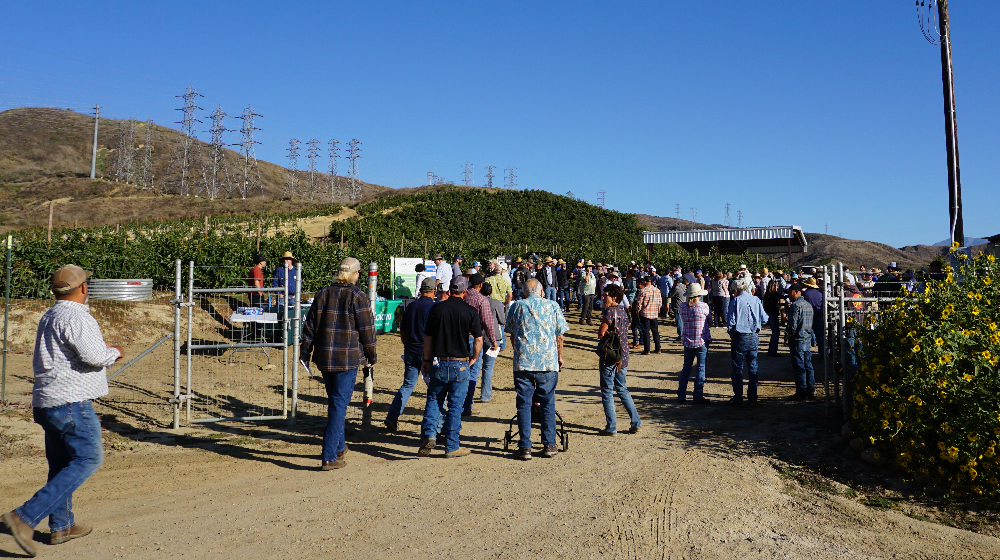
The trees at Long Canyon Ranch are planted close together and on berms that run down the slope in order to aid water drainage.

Newly planted trees have drip lines laid close to the trunks.
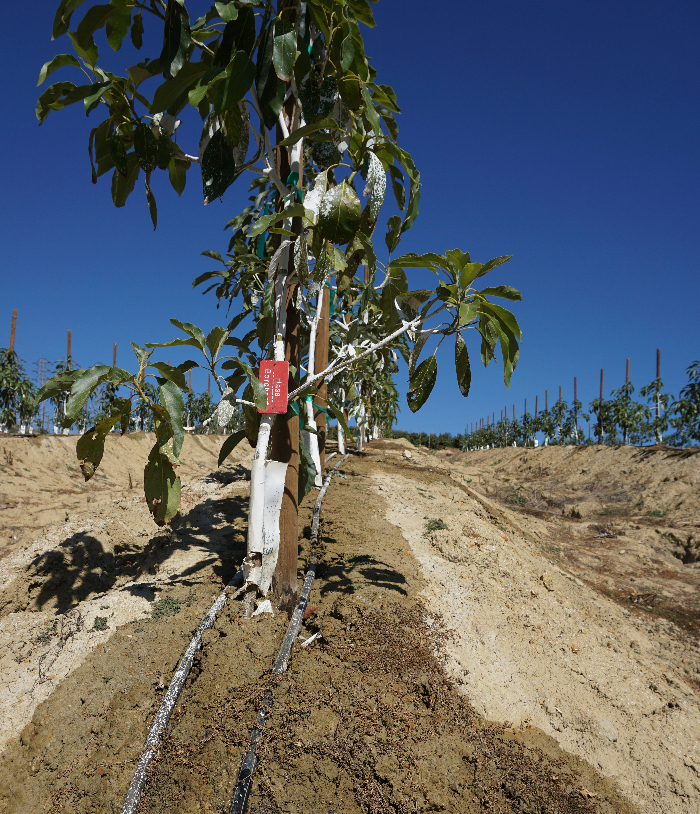
Drip lines are spread out as the trees get older.
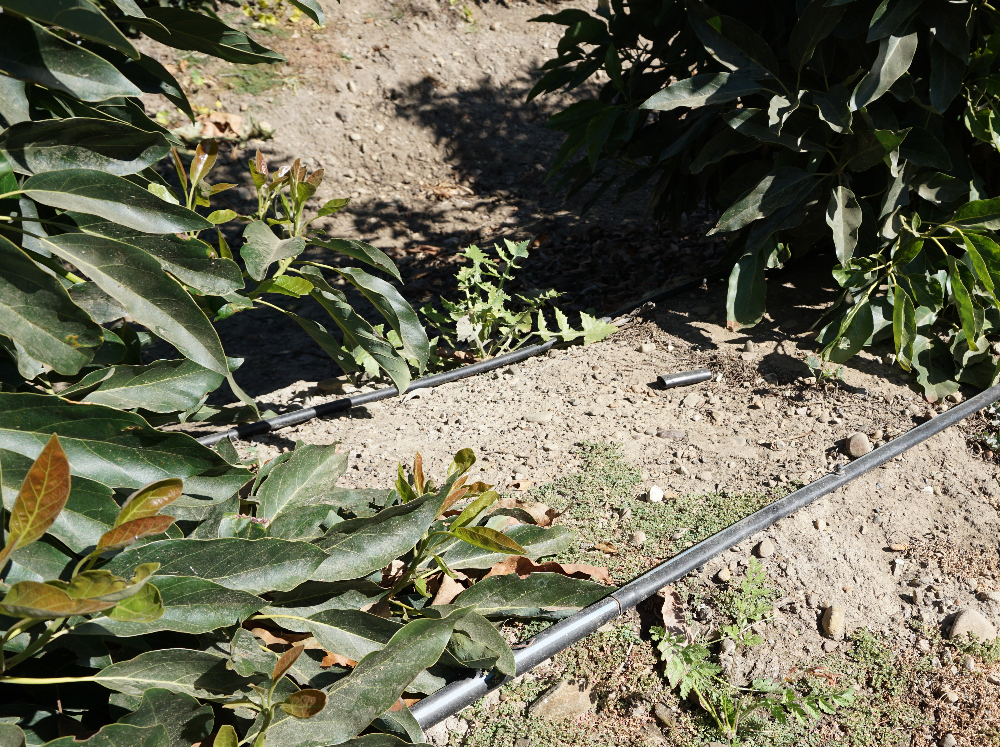
Brokaw is testing new rootstocks gleaned from around the world to gauge how they do in California conditions. Do you notice the trees in the middle growing poorly? Those rootstocks are not well-suited for these growing conditions.
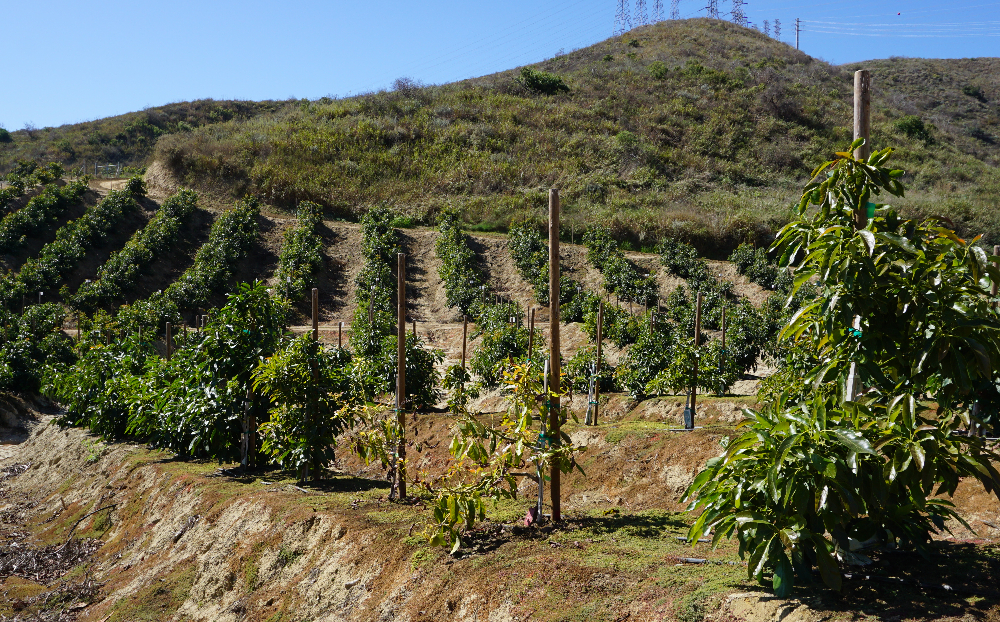
After the California Avocado Society’s Annual Meeting at Brokaw was finished, I drove east to Cheravo Ranch in Santa Paula, where ranch manager Nathan Lurie gave me a tour. We stopped at the oldest Carmen avocado tree in California.
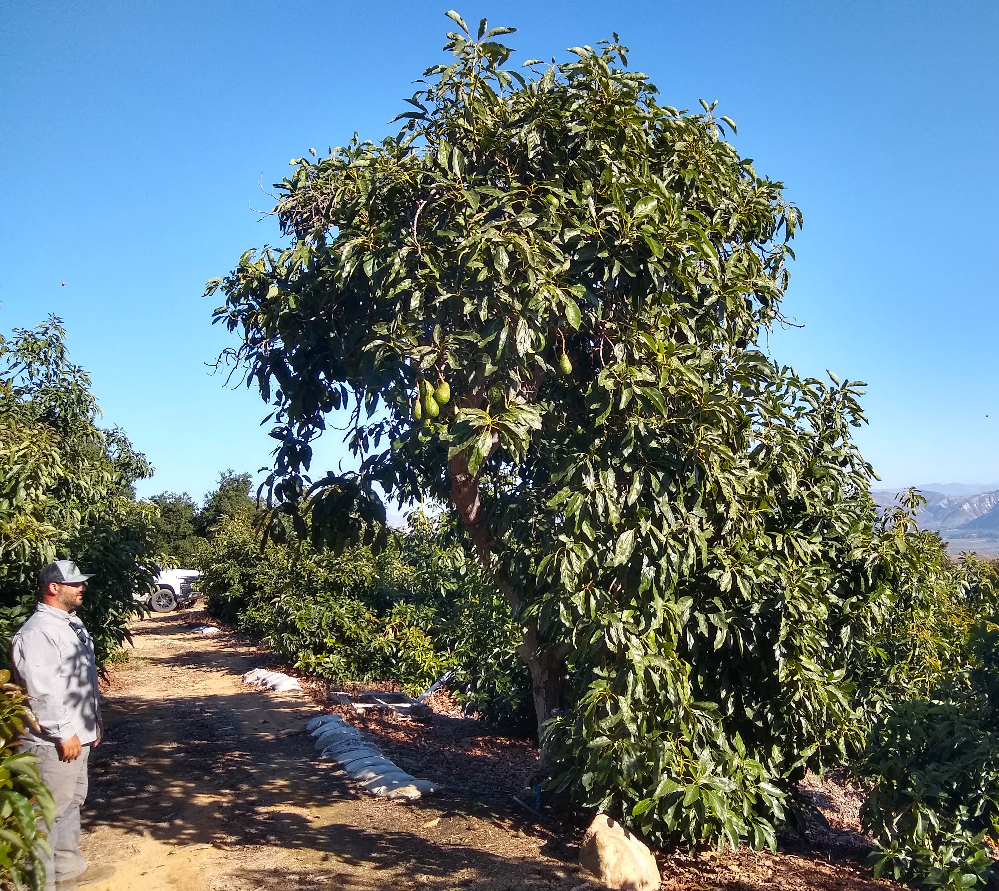
We visited a section of younger Carmen trees to see if they were having their unique fall flowering, usually called the “off bloom.” A few were in bloom, and there were also some mature avocados from last fall’s off bloom.

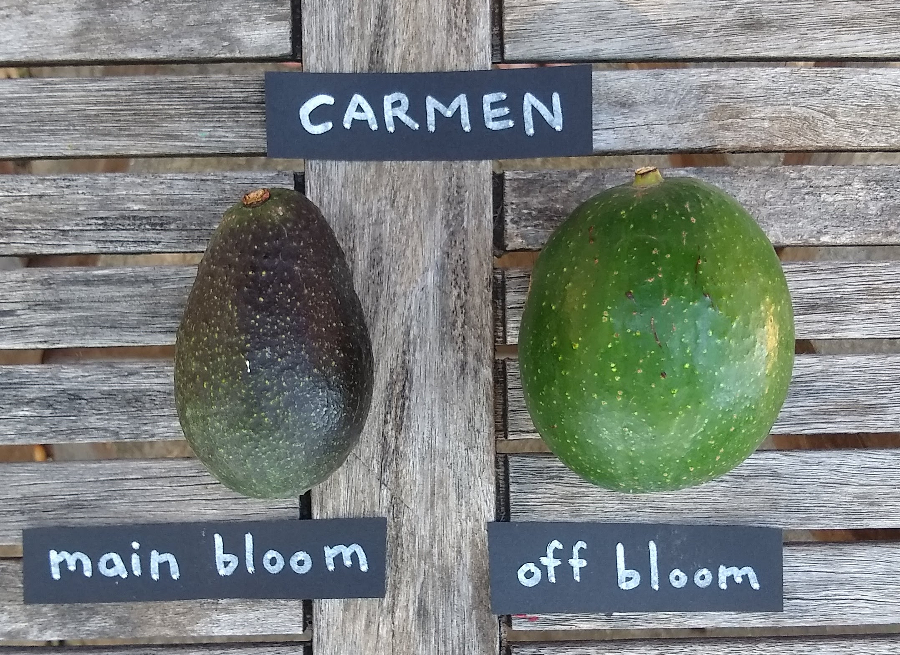
We also visited some mature trees of the variety now called Luna, formerly known as Marvel or BL516.
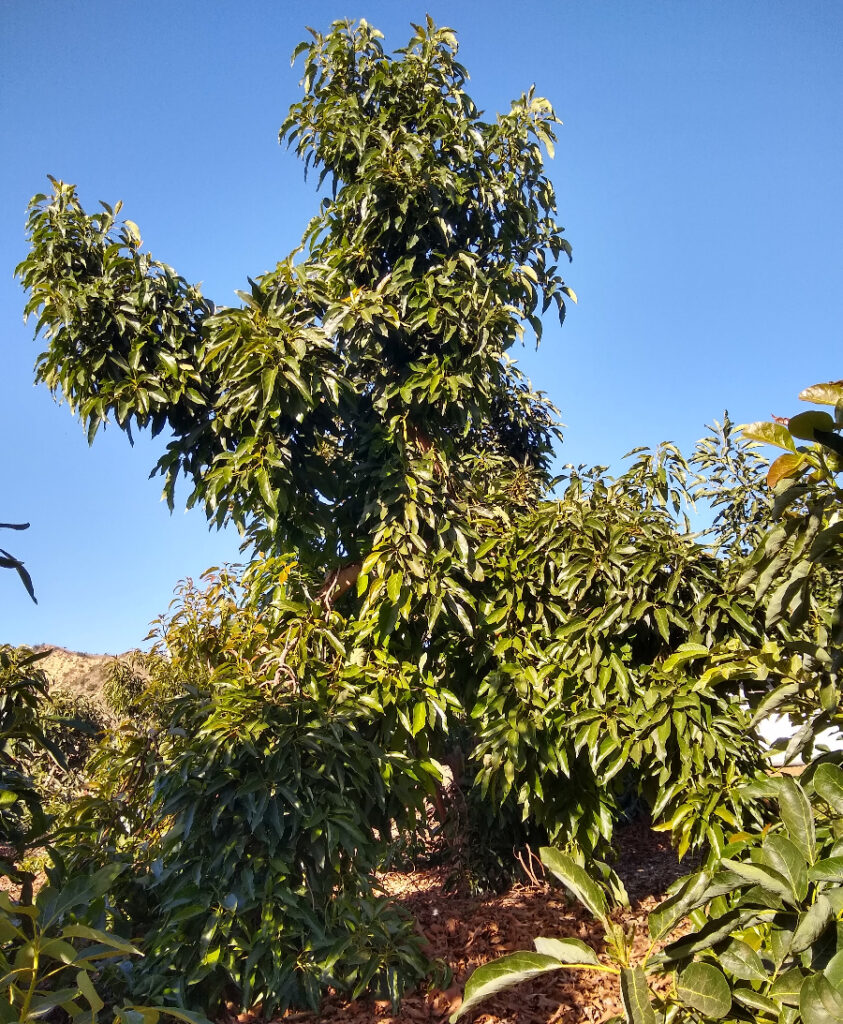
In the late afternoon, I left Cheravo and headed south across the Santa Clara river and up into the hills near Somis to the grove of John Schoustra, which is adjacent to his Greenwood Daylilly Garden nursery. Like Brokaw’s Long Canyon Ranch, he grows his trees on berms oriented up and down the slope.
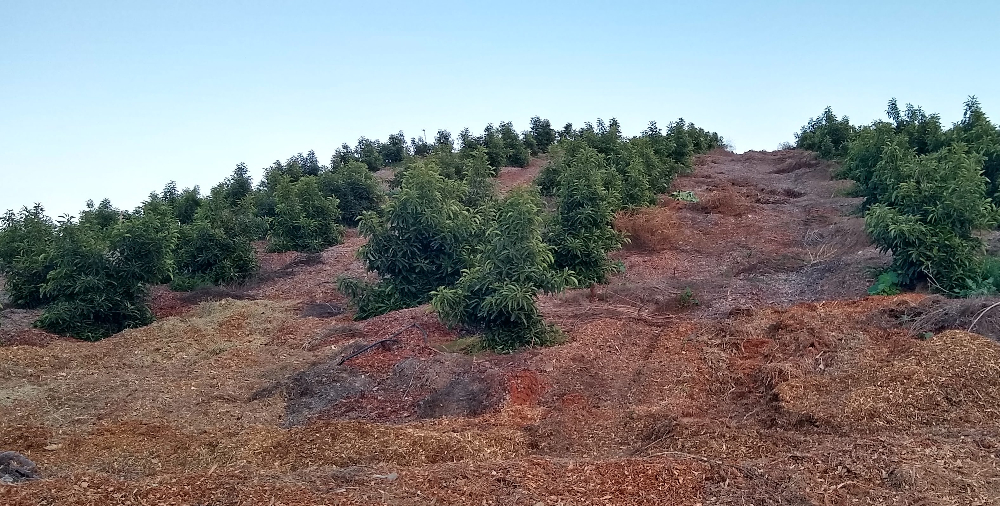
I’ve never seen an avocado grove covered so thickly in wood chips as John Schoustra’s. And the trees clearly enjoy it. In fact, he says he doesn’t find the need to add fertilizer. I saw the evidence on the tree branches, which were heavy with fruit.

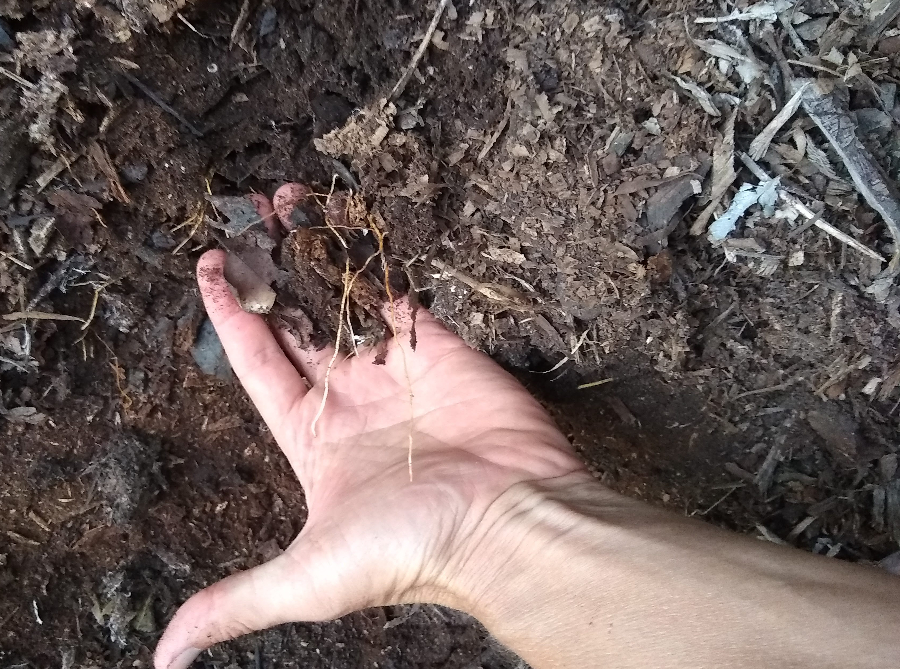
I departed Schoustra’s place as the sun was setting. I had a three-hour drive back to San Diego, but I never even turned on the radio because my mind remained busy reviewing and trying to understand all that I’d seen.
That was 13 photos. How about we end the slideshow with one short video from the California Avocado Society’s meeting at Long Canyon Ranch?
These Yard Posts come to you without ads because of lots of cool Supporters. Become one today!
All of my Yard Posts are listed here.

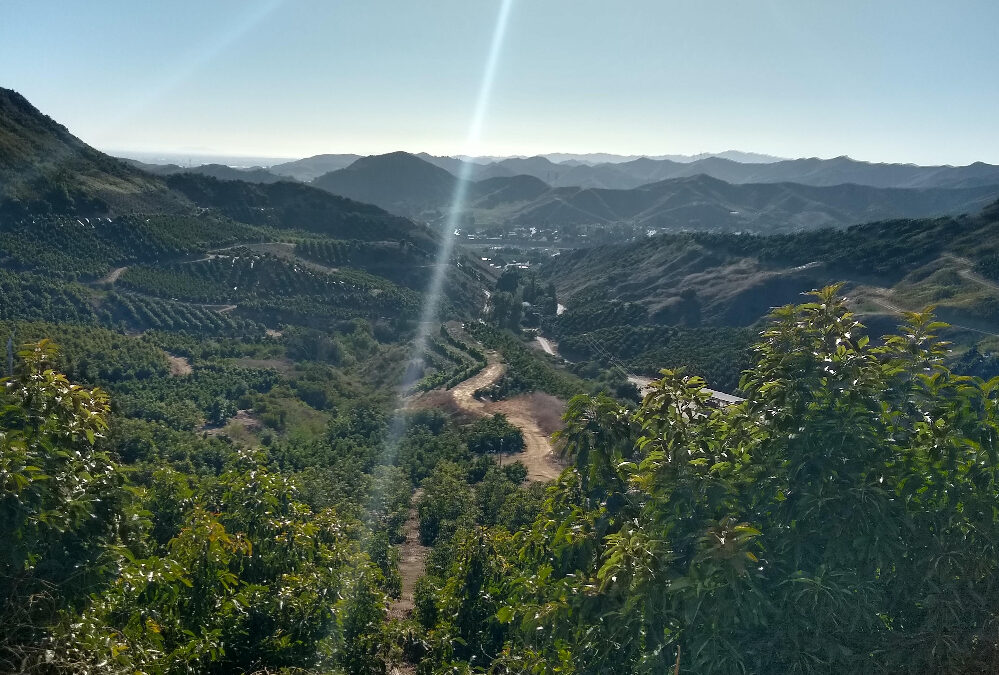


Thank you Greg, another excellent post. I’m surprised you didn’t get distracted driving home with all the days images in your mind. I like the “wood chip” mulch idea and will use it as they’re readily available and seem an excellent choice. !! Did you bring a few avocados home? BR, Joe
Thanks, Joe. I did bring home a few Carmens and avocados of the Walter Hole variety (they’re small and purple).
Hi Greg,
Great coverage!
Just to understand why on the 4th picture the newly planted trees have drip lines laid close to the trunks and irrigate all the dirt in between the trees as well. Seems to be a waste of water…
BTW we got nice rain over the last couple of weeks here in South Portugal!
The avos that made it through the cold snap are doing well; most of the rootstocks from the dead trees grow big! Almost 8 feet high!
Don’t know what to do now. Let them grow and graft the next spring?
I’m afraid, I’m not ready for that type of grafting yet…
Thanks,
Vasco
Hi Vasco,
You’re right. I don’t like that setup myself. But if you’re using drip tubing with inline emitters then you have no choice; however, you can plant something in between the young trees for the first couple years in order to use that water. I’ve seen people plant melons, pumpkins, oats, peas, and more.
But the reason I showed the photo is to emphasize that the drip emitters must be near the trunks of new trees at first because that is where the roots are. I’ve seen people make the mistake of placing emitters too far from the trunks of new trees only to wonder why the trees didn’t grow much despite the ample water they were applying.
That’s great regrowth! I guess your only choices are to graft in spring or let the rootstocks grow and see if their fruit is any good.
Should you choose to graft, I recommend watching Gray Martin’s videos. I made a playlist of them here.
I’m jealous of your rain. We have received nothing so far. I suspect this winter will be on the dry side for us.
Makes sense keeping the driplines close to the trunk when trees are still young.
I guess you’re right with spring grafting, but I also considered to let some grow and see what happens.
I watched a couple of Gray Martin’s videos. Best so for far for beginners like me. Also get my Parafilm tape…
On another avo subject, at our home close (≈100m) to the coastline, all trees seem to struggle against the salty winds when the rain sets in now. The last try with an real Hass also looks bad. Leave tips are burned and a lot fall off. My mom covered the tree with an black plastic trash bag to avoid losing them all…
What do you think which varieties would stand the winds better?
Thanks,
Vasco
Hi Vasco,
Maybe some varieties that show more tolerance to salty irrigation water would tolerate salty winds better too? I’m thinking of Reed in particular. Just a guess.